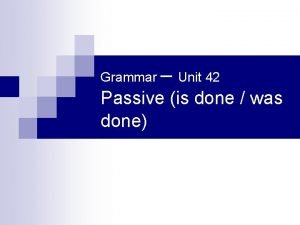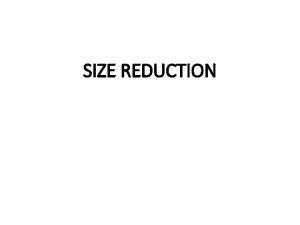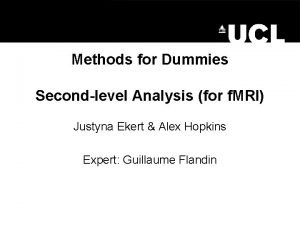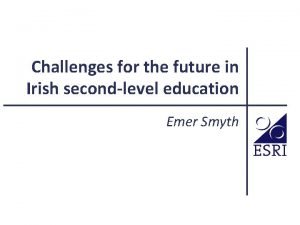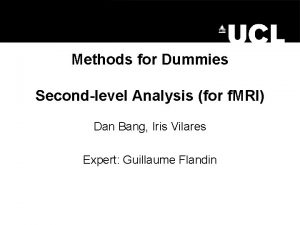First vs Secondlevel Analyses First level analyses done








- Slides: 8

First- vs. Second-level Analyses • First level analyses – – – done on individual participants estimate one beta per condition per subject look at consistency of effects relative to temporal variability df = number of volumes – model df – 1 need to correct for serial correlations because they strongly affect df • RFX Second-level analyses – look at consistency of effects relative to intersubject variability – df = number of participants – 1 – do not need to correct for serial correlations because df is based on participants rather than temporal variability – some researcher still recommend correcting for serial correlations anyway – RFX allows you to generalize to population

Examples from a real data set

Concatenated FFX (No SPSB) • Example 17 Subjects x 2 runs with Faces & Objects df = 17 Ss x 2 runs/S x 264 vols/run - 1 one predictor per condition

FFX Separate Subjects (SPSB) • • • … If you’re looking at pilot data from a few Ss, with RFX it will be hard to see any effects. You can do FFX with separate subjects. It has the same problems as concatenated FFX but at least enables you to examine the consistency between Ss

RFX S 1 S 2 S 3 … S 17 This contrast is just like doing a paired t-test between Faces and Objects with 17 Ss df = 17 Ss - 1 Now that our df no longer depends on # volumes, we don’t have to worry about correction for serial correlations with RFX

Random Effects Analysis • Brain Voyager recommends you don’t even toy with random effects unless you’ve got 10 or more subjects (and 50+ is best) • Random effects analyses can really squash your data, especially if you don’t have many subjects. • Though standards were lower in the early days of f. MRI, today it’s virtually impossible to publish any group voxelwise data without RFX analysis • As we will see shortly, spatial smoothing is more important for group data, especially RFX than single-subject data

Strategies for Exploration vs. Publication • Deductive approach – – • Have a specific hypothesis/contrast planned Run all your subjects Run the stats as planned Publish Inductive approach – Run a few subjects to see if you’re on the right track – Spend a lot of time exploring the pilot data for interesting patterns – “Find the story” in the data – You may even change the experiment, run additional subjects, or run a follow-up experiment to chase the story • While you need to use rigorous corrections for publication, do not be overly conservative when exploring pilot data or you might miss interesting trends

Why would you ever want to do FFX SPSB instead of RFX? • For publication, you will usually need RFX – Rule of thumb: RFX needs 12+ Ss to have decent power (more is better) • For investigating pilot data, FFX SPSB can be useful • If you have a small number of subjects – beware you cannot generalize to population • If you want to explore individual data and want to save some time by making 1 GLM/all subjects instead of 1 GLM/subject – can do contrasts like • + S 1_Faces – S 1_Objects
